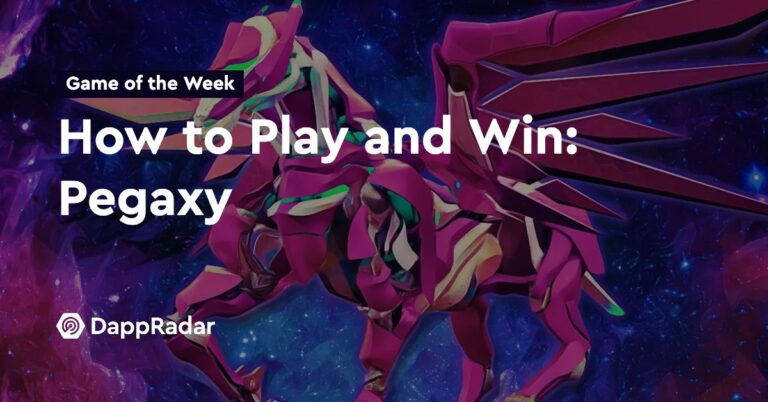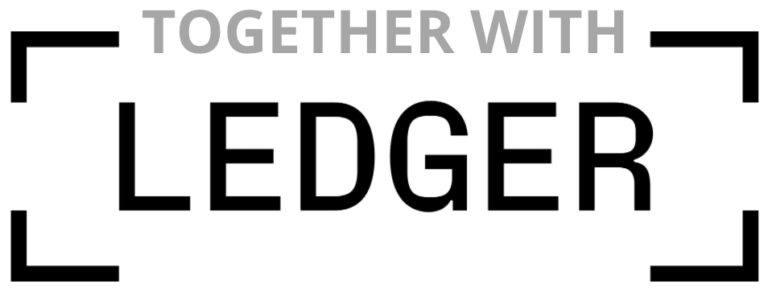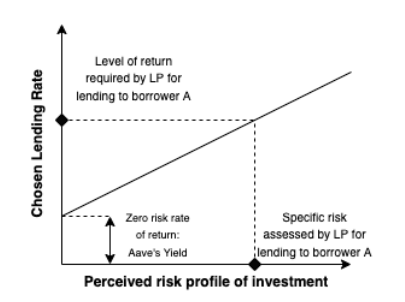Key Insights
- Casper is a public Layer-1 (L1) blockchain geared toward enterprise adoption.
- Its core technological stack includes a consensus protocol built using the Correct-by-Construction (CBC) Casper framework, upgradeable smart contracts, and weighted key management.
- The ecosystem features several enterprise applications; retail DeFi and NFT activity has not yet taken off.
- Casper 2.0 is planned for Q3’23 and seeks to improve the blockchain’s consensus mechanism, account and smart contract structure, and NFT capabilities.
Enterprise blockchain use cases have been highly touted, but they have seen far less implementation compared to retail and crypto-native use cases, as enterprises generally move slower and require more secure, regulated, and tailor-made infrastructure.
The Casper network is a public L1 blockchain seeking to provide reliable infrastructure for enterprises. Its core technological differentiators, including upgradeable smart contracts and weighted key management, are designed for enterprise adoption. However, only a handful of enterprise applications have launched, and retail activity on the network is low. Nevertheless, its core technology and developed partnerships position Casper to be a leading blockchain for enterprise use cases.
Background
CasperLabs was co-founded in Q4’18 by CEO Mrinal Manohar, who previously worked in private equity and was an early Bitcoin adopter, and CTO Medha Parlikar, who previously held senior positions at various software engineering organizations.
Casper derives its name from the consensus mechanism framework Correct-by-Construction (CBC) Casper, which Casper’s own consensus mechanism, Highway, is based on. CBC Casper was designed by Ethereum researcher Vlad Zamfir as a potential Ethereum Proof-of-Stake (PoS) design. Zamfir published a whitepaper for CBC Casper at the end of 2017, but the Ethereum Foundation and developers ultimately chose to pursue implementation of Casper the Friendly Finality Gadget (FFG), a related consensus protocol. In early 2019, Zamfir joined CasperLabs as lead consensus protocol architect, but later left. In 2021, he filed a copyright infringement injunction against CasperLabs for their use of “Casper,” which was denied by a U.S. federal judge.
In mid-2019, CasperLabs raised $14.5 million in a Series A equity round. It released its Highway Whitepaper in Q4’19, which details its implementation of CBC Casper. Following two testnets, two private token sales, and a public token sale on CoinList by a Swiss non-profit entity Casper Association, the Casper Mainnet launched on March 31, 2021. Along with CasperLabs, the network is supported by the Casper Association, a Swiss non-profit entity.
Technology
Consensus Mechanism
CBC Casper
Correct-by-Construction (CBC) Casper is a consensus mechanism framework. It uses mathematical proofs to define a consensus protocol with certain properties. If other consensus protocols are designed following its blueprint, they can assume its properties without needing to prove them again.
CBC Casper’s properties include the “low overhead of blockchain consensus protocols and the asynchronous, Byzantine fault tolerant safety…[of] traditional consensus protocols” (Source: CBC Casper v0.1). Safety is one of two key security properties of consensus mechanisms, along with liveness. It ensures that the protocol does not make inconsistent decisions (i.e., that two finalized blocks cannot contradict each other).
Validators don’t always agree on the same block, thus CBC Casper needs to run on top of some ruleset that deals with chain forks (“fork choice rule”). CBC Casper is built on top of the “latest message driven greedy heaviest observed subtree” (LMD GHOST) fork choice rule, which has improved finality properties compared to the longest chain rule.
Highway
Highway is CasperLabs’ extension of the CBC Casper framework. It is a partially synchronous, leader-based BFT consensus protocol, similar to Hotstuff or Tendermint. However, Highway uses a direct acyclic graph (DAG) for its data structure, which has advantages in throughput and latency. Highway furthers the CBC Casper framework in two main ways:
First, Highway addresses the liveness property of consensus protocols, which guarantees that the protocol will eventually make a decision.
Additionally, Highway makes improvements in finality and flexibility. In Highway, finality is treated as a spectrum, depending on the percentage of total validator stake finalizing each block. The amount of stake finalizing a block is the amount of stake that would have to be slashed for a block to be reverted. Block lengths are dynamic, lasting between thirty seconds and eight minutes.
This finality design brings flexibility to the network’s nodes. Each node can have their own finality threshold, allowing them to play different roles within the ecosystem. Nodes that deal with transactions of less value could potentially have lower thresholds of finality to increase time-to-finality, and vice-versa.
Highway uses the LMD GHOST fork choice rule specified in the CBC Casper framework, which is the same rule used in Ethereum 2.0 consensus.
Validator Economics
Validators bid every era, which lasts around two hours, to participate in consensus. The top 100 bidders are selected to participate. The 100-validator limit mitigates the messaging overhead, which is high in Highway (minimum of 20k messages per block). Winning bids become the validators’ stakes, and validators’ voting weights are proportional to their stakes.
Validators are rewarded with block rewards assuming they follow the protocol and send messages on time. Inactive or malicious validators are deactivated until they signal for reactivation. There is currently no slashing mechanism, but there are future plans to penalize inactive or malicious validators by locking up their stake for an extended period of time.
Hardware requirements for running a node can be found here.
Computation
Computation is completed in a WebAssembly (wasm) interpreter, and a developer can write smart contracts for Casper in any language that compiles to wasm. Additionally, CasperLabs are developing a Solidity to Rust compiler called Caspiler. The Casper-JS-SDK allows dapp developers to interface with smart contracts.
Opposed to other blockchains, Casper supports upgradeable smart contracts. Casper’s smart contracts are immutable in the past but mutable in the future. This feature is aimed toward enterprises, which prefer flexibility in applications. It removes the need for complex migration processes and makes it easier to patch smart contract vulnerabilities. However, it does add trust assumptions. A user who stakes their assets in a smart contract, for example, must trust that the smart contract’s owners will not change the code in a malicious manner.
Accounts
Another key feature of Casper aimed toward enterprise adoption is its weighted key support. Accounts can have one or more keys associated with them, and each key can have its own weight. Accounts can set different key thresholds for “deploy” (token transfers, smart contracts calls, etc.) and for key management. This allows users and enterprises to create wallets with higher security thresholds for key management than deploys.
Tokenomics
Casper Network’s native token, CSPR, is used for transaction fees and network security (validator staking).
Ten billion tokens were initially minted at genesis, with no fixed supply, and they are minted at an 8% inflation rate to reward validators. The inflation rate can be adjusted through a governance vote by validators. There is currently no burn mechanism.

Private Sale (30%): There were two private token sales before launch. Both sales had a 90-day lockup from mainnet launch followed by a 14-week vesting period. Participants were required to serve as validators or delegators to receive their unstaked tokens.
- Round 1 (September 2020) sold 20% of the total supply at an effective price of $0.0077 per token ($77 million valuation). Participants included HashKey Capital, AU21 Capital, GSR, Stake.Fish, Gate.io, and others.
- Round 2 (February 2021) sold 10% of the total supply at an effective price of $0.011 per token ($110 million valuation). Participants included OKX Blockdream, Bixin, A195, AllianceBlock, and others.
Ecosystem (29%): The ecosystem portion is split into two allocations – one managed by DEVxDAO and the other by the Casper Association.
- DEVxDAO (16%): DEVxDAO is an independent organization that facilitates grants for the Casper Network. Users must register on the portal to submit grant requests, which are voted on by voting associates who join the organization through a nomination and voting process. Most grant requests do not have upfront funding and require successful progress updates to receive the agreed-upon allocation. So far, DEVxDAO has allocated around $15 million to over 100 completed grant projects. The biggest grants have been:
- Over $2 million across three grants for testnet validator rewards, around $400,000 of which was distributed to compensate the individuals managing and running the testnets.
- Nearly $2 million across three grants to retroactively fund the creation of DEVxDAO.
- Slightly over $1.5 million to a whitehat for reporting a vulnerability in Casper’s protocol.
- Over $900,000 to MAKE for reporting several bugs in Casper’s protocol.
- Casper Association (13%): The Casper Association was allocated 7% of the total supply at genesis with no lockup. Its remaining 6% allocation had a one-year lockup followed by a 60-month vesting period. These tokens are used for developer grants, hackathons, and other network and ecosystem incentives. The Association stakes the tokens on its balance sheet.
Team and Advisors (24%) is broken down into three allotments:
- CasperLabs Holdings AG (10%):
- Since launch, CasperLabs have been staking 1 billion tokens. The team does not plan to un-stake, sell, or transfer these tokens or their earned staking yield; however, it is theoretically possible for them to do so.
- Founders and core team members (8%):
- Tokens had a three-month lockup followed by a 24-month vesting period.
- Advisors (6%):
- 2.3% of the total supply was granted to advisors three months after launch with roughly one-year lock ups. The remaining advisors’ allocation is held and staked by CasperLabs to give out on a quarterly basis with 3-month lock ups.
Public Sale (17%): A CSPR public sale was conducted on the token issuance platform CoinList by the Casper Association in four tranches:
- Options 1 and 4: 9% of the total supply was sold at $0.015 per token ($150 million valuation) with a 12-month lockup followed by a six-month vesting period.
- Option 2: 4% of the total supply was sold at $0.02 per token ($200 million valuation) with a six-month lockup followed by a six-month vest.
- Option 3: 4% of the total supply was sold at $0.03 per token ($300 million valuation) with a 40-day lockup.
As of Dec. 20, 2022, almost all of the original 10 billion tokens are unlocked and liquid. Around 8% of tokens are yet to unlock, which are part of the team, advisors, and treasury initial allocations. Thus far, 1.36 billion tokens have been minted due to inflation. CSPR’s current fully diluted market cap is $300 million.
Current State of Casper Network and Ecosystem
Network Activity

Users and Developers
Since mainnet launch, there have been over 785,000 total transactions (including failed transactions). This averages to around 1250 transactions per day. In total, 188 unique smart contracts have been deployed to Casper.
In the past 30 days:
- The average transaction count is 930.
- Token transfers have accounted for 75% of transactions.
- Delegating and undelegating have accounted for 23% of transactions.
- Non-delegating related smart contracts have accounted for 2% of transactions.
- 32 different smart contracts have been called.
Source: Cspr.Live
For comparison, average transaction counts over the past 30 days for leading L1 blockchains are 1 million (Ethereum), 3 million (Polygon), 19 million (Solana), and 2 million (Avalanche).
Validators and Delegators
The network has a fixed count of 100 participating validators. There are currently 21,443 delegators. Validators and delegators stake a combined 8.55 billion CSPR ($229 million as of Dec. 20, 2022). The network has a nakamoto coefficient of 7, around the median of chains compiled on nakaflow.io.
Ecosystem
Partnerships and Enterprise Use Cases
CasperLabs and the Casper Association have focused on growing Casper’s ecosystem regarding its partnerships and enterprise use cases.
IPwe: IPwe is a global IP platform. With help from CasperLabs, it is building tools on Casper Network to enable businesses and governments to better manage patents. They are minted as NFTs on Casper, allowing them to be verified, stored, traded, and licensed at a lower cost and higher transparency than in traditional patent markets. The partnership was announced at the beginning of 2021. Since then, 143 patents have been minted on Casper. IPwe plans to significantly increase their usage of Casper, with more details to be announced soon.
Metacask: Metacask partnered with CasperLabs to build an NFT marketplace for high-end whisky cask investments. By bringing this market on-chain, Metacask aims to increase transparency and remove operational inefficiencies in the high-end whisky market. Metacask is also building a solution to help brands manage and track their inventory.
The first auction hosted by Metacask in October 2021 sold a cask for $2.3 million on the Ethereum blockchain. Due to scalability issues and the desire for upgradable smart contracts, Metacask migrated and launched a marketplace on Casper in March 2022. Since then, Metacask has held several auctions. The team is also working on a revamped site, which will represent all casks as NFTs on the blockchain but allows customers to settle their payments off-chain.
DeFi
Friendly Market: Friendly Market is Casper’s first automated market-making decentralized exchange, launched in mid-2022. Users can trade tokens or supply liquidity, and the largest pool on the DEX is dUSDC-CSPR, which has around $100,000 in liquidity. It also plans on building an NFT marketplace, launchpad, predictions market, and options market.
NFT
CEP-78 Standard: In Q3’22, Casper developers released the CEP-78 NFT standard. Many of the new features are designed for enterprises, including upgradability, mutable metadata, streamlined management, enhanced testing, native whitelist functionality, and more.
CSPR.studio: CSPR.studio is an NFT minting platform developed by the same team behind the CSPR.live block explorer (MAKE). The platform allows users to easily mint an NFT from an uploaded image, video, or audio file. Since its launch a month ago, there have been 468 mints and transfers on the platform.
CasperPunks: To celebrate its third birthday, Casper Association launched a CasperPunks NFT collection during NFT.NYC in late 2021. The Association held a free giveaway for the NFTs. Despite over 90,000 entrants, only 62 of the 100 winners have claimed their CasperPunk. The Association promised “future benefits and utility” to CasperPunk owners, but so far they have not had any benefits or utility. The NFTs are also currently unable to be transferred or sold.
The team is hoping to revive the project with an upcoming mint of 10,000 Generation 1 CasperPunk mints, and Generation 0 holders will be able to automatically claim a spot on the whitelist. The roadmap states future benefits, including utility within a CasperPunks game, IP rights, access to in-person and metaverse events, and more.
Roadmap
Technical Improvements
In September, CasperLabs announced plans for a Casper 2.0 upgrade. The upgrade will include a new consensus protocol, changes to the structure of accounts and smart contracts, and NFT enhancements. It was originally announced for Q1’23, but the upgrade is now delayed until Q3’23.
Zug Consensus Protocol: Zug is a novel consensus mechanism that will be implemented in Casper 2.0. The full paper detailing it is still in peer review, but a recent blog post compares it to Highway. The main improvement of Zug over Highway is reduced messaging overhead, which will allow Casper to increase its validator set limit from 100.
Unified Accounts and Contracts: Under Casper 2.0, smart contracts will have all the properties of accounts, including its own pool of tokens, which it can use to pay transaction fees and stake to the network. This will allow applications to subsidize gas fees for users.
CasperLabs is also working on improving Casper’s data infrastructure. However, this has taken a back seat to Casper 2.0 upgrades.
Lastly, CasperLabs is working on building a hybrid network bundle. The bundle will allow enterprises and governments to run a private version of Casper that has sidechain-like checkpoints to the public Casper network. The solution is still in development but is nearing a minimum viable product (MVP) release.
Growth Strategy
As an enterprise blockchain, Casper’s success will depend on attracting quality developers to build applications and forming key partnerships with enterprises.
To attract devs, the Casper Association and DEVxDAO will continue deploying their available tokens to grants, hackathons, and other developer incentives. The Association recently announced a $25 million grant accelerator program to reward ecosystem builders.
CasperLabs also aims to continue partnering with enterprises exploring blockchains use cases to enhance their business, such as with the IPwe and Metacask projects. Partnerships with China’s Blockchain-based Service Network (BSN) in early 2021 and IBM in early 2022 have also been announced. In early January, CasperLabs plans to announce a partnership with Google.
Conclusion
Casper’s flexible and secure consensus protocol, upgradeable smart contracts, and weighted key management make it suitable for enterprise applications. Enterprise applications such as IPwe and Metacask have brought real-world use cases to Casper. However, on-chain metrics indicate that their adoption has been slow with product-market fit currently missing. Furthermore, with a focus on enterprise adoption, retail activity on Casper is low compared to leading blockchains.
However, the Casper 2.0 upgrade planned for Q3’23 should improve enterprise and retail adoption, especially if applications choose to subsidize gas fees under the new smart contract structure. If Casper’s teams and developers can successfully deploy Casper 2.0 and attract high-impact partners and ecosystem developers, Casper will be poised to gain market share among L1 enterprise blockchains.




